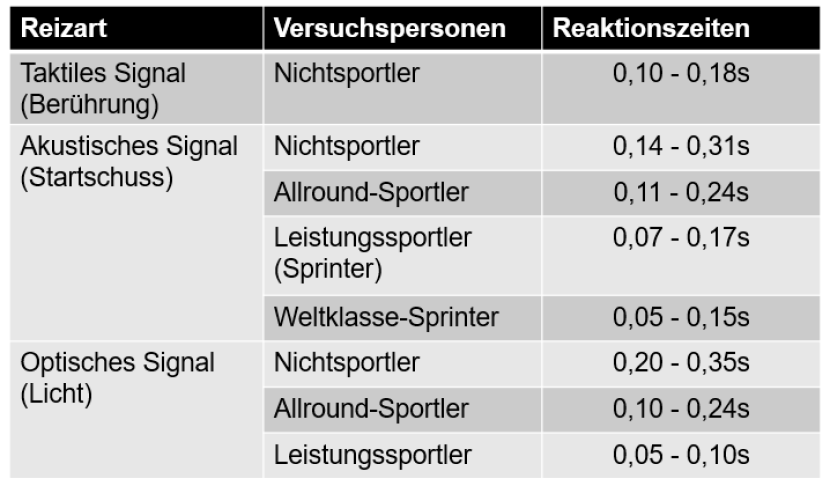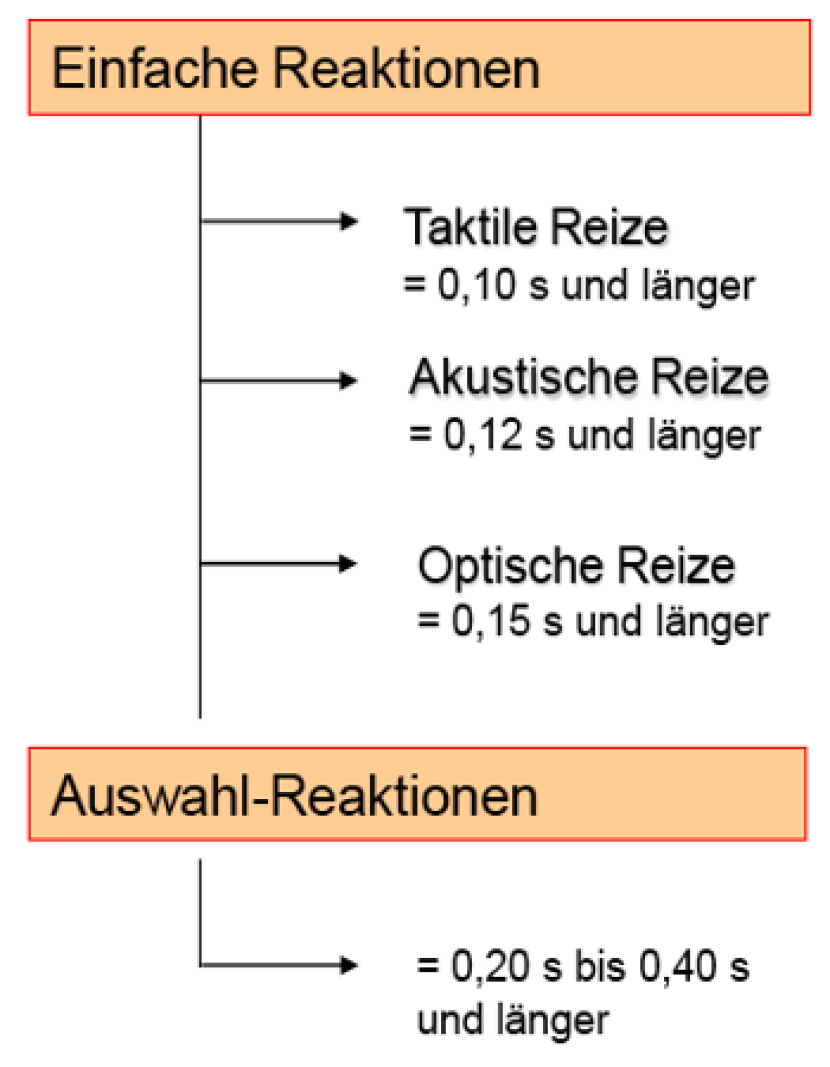Goals and effects of speed training
The main objectives of speed training are to shorten reaction times, process signals more quickly and maximise the ability to accelerate. The greater the resistance during speed training, the more strength is also trained. In addition to the ability to work muscles quickly, the processing speed must be trained so that athletes are able to initiate and implement their actions in a much shorter time.
In health and recreational sports, speed training is also important in order to maintain the fast FT fibres in the muscles and contribute to accident, fall and injury prevention (e.g. tripping often requires a quick reaction in order to cushion or even prevent a fall).
Reaction times to signals


A distinction is made between the simple reaction and the choice reaction. In the simple reaction, a specific reaction occurs to a specific stimulus (e.g. tactile, acoustic or visual). The choice reaction, on the other hand, is a situation-dependent reaction to a stimulus, which means that a different reaction is required depending on the stimulus.
More info: